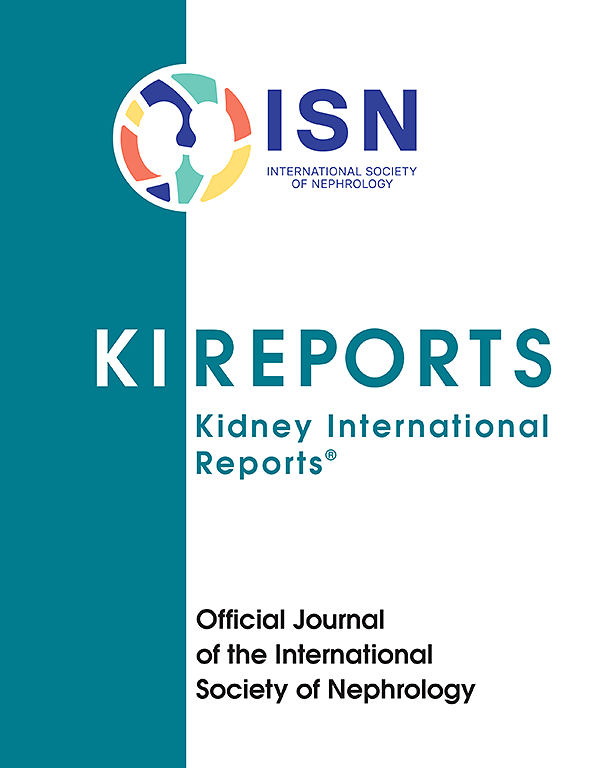Bartonella Endocarditis-Associated Glomerulonephritis: A Mimicker of Autoimmunity and Vasculitis
IF 5.7
2区 医学
Q1 UROLOGY & NEPHROLOGY
引用次数: 0
Abstract
Introduction
Bartonella spp. are highly fastidious gram-negative facultative intracellular bacteria which can cause a culture-negative infective endocarditis (IE) with unique clinicopathologic features.
Methods
In this study, we assembled 20 cases of glomerulonephritis (GN) due to Bartonella IE from 3 institutions and compared them with 49 cases of culture-positive IEGN and 30 cases of non-endocarditis infection-related GN (IRGN).
Results
IEGN was seen in approximately 0.15% to 0.4% of native renal biopsies, with Bartonella causing 8% to 21% of IEGN. Patients with Bartonella IEGN had preexisting cardiac valve alterations (75%); antineutrophil cytoplasmic autoantibody (ANCA) positivity (67%); hypocomplementemia (75%); antinuclear antibody positivity (53%); cryoglobulinemia (45%); and hematologic manifestations, including B-symptoms (79%), splenomegaly (59%), thrombocytopenia (83%), and pancytopenia (44%). In 75% of the cases, Bartonella endocarditis was not diagnosed until after kidney biopsy. Pathologically, Bartonella IEGN presented as a focally crescentic GN, which was C3 codominant (80%) with strong IgM (65%) and/or C1q (55%), or pauci-immune (10%), with predominantly mesangial deposits and limited exudative features. At a median follow-up time of 15 months, progression to end-stage kidney disease (ESKD) for all-comers with IEGN was associated with higher creatinine levels at diagnosis, presence of nephrotic syndrome, female sex, and C1q staining intensity. Although delayed diagnosis of infection and immunosuppressive therapy for presumed autoimmune disease before kidney biopsy were more common in Bartonella IEGN than in culture-positive IEGN, neither were associated with ESKD.
Conclusion
IEGNs share laboratory and biopsy features with autoimmunity, which may obfuscate identification of underlying bacterial infection.

求助全文
约1分钟内获得全文
求助全文
来源期刊

Kidney International Reports
Medicine-Nephrology
CiteScore
7.70
自引率
3.30%
发文量
1578
审稿时长
8 weeks
期刊介绍:
Kidney International Reports, an official journal of the International Society of Nephrology, is a peer-reviewed, open access journal devoted to the publication of leading research and developments related to kidney disease. With the primary aim of contributing to improved care of patients with kidney disease, the journal will publish original clinical and select translational articles and educational content related to the pathogenesis, evaluation and management of acute and chronic kidney disease, end stage renal disease (including transplantation), acid-base, fluid and electrolyte disturbances and hypertension. Of particular interest are submissions related to clinical trials, epidemiology, systematic reviews (including meta-analyses) and outcomes research. The journal will also provide a platform for wider dissemination of national and regional guidelines as well as consensus meeting reports.
 求助内容:
求助内容: 应助结果提醒方式:
应助结果提醒方式:


